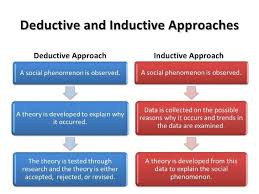The inductive method, inductive reasoning or simply induction, is a type of argument used in several areas of knowledge. This method is intended to reach a conclusion.
Therefore, it is widely used in the sciences where it starts from true premises to reach conclusions that may or may not be true. In this sense, the induction adds new information to the premises that were previously given.
Example
As an example, we can think of the observations of a scientist who analyzes the water’s boiling temperature. First, he notes that the boiling point of water is 100 ° C.
To be sure, the scientist performs this experiment several times. Upon reaching the same conclusion, he determines that the boiling point of water will always be 100 ° C.
Thus, we can see that the conclusion reached by the scientist was reached by observation, that is, induction. They are therefore based on systematic observation of the facts.
Although the inductive method is widely used in science, some scholars consider this approach to be flawed. This is because through a particular survey, certain probable conclusions are found that are nothing more than assumptions. Thus, the inductive method suggests the truth, but does not guarantee it.
Francis Bacon and the Inductive Method
The English philosopher Francis Bacon (1561-1626) was responsible for the creation of the inductive method in the 17th century.
Together with the concept of Empiricism , Bacon defined an investigation method based on the observation of natural phenomena.
According to him, this methodology would be divided into four stages:
- Collection of information from rigorous observation of nature;
- Meeting, systematic and rational organization of the collected data;
- Formulation of hypotheses according to the analysis of the collected data;
- Proof of hypotheses based on experiments.
Inductive and Deductive Method
The inductive and deductive methods are similar in that they start from real premises to reach conclusions. Both are used for the purpose of attaining the truth.
The difference, however, is that in the inductive method, this conclusion may or may not be true. That’s because, it goes beyond the limits of the premises.
In turn, in the deductive method , the conclusion is drawn from the premises themselves. For this reason, the inductive method is called “amplifying”, while the deductive method is “non-amplifying”.
In short, the inductive method starts from observations while the deductive one starts from theory.
| Method | Meaning and Example |
|---|---|
| Inductive method | To reach a conclusion, this type of reasoning starts from the specific to the general . Thus, from a particular premise there is a generalization until it reaches the universal. Note that it can create new knowledge.Example :Every cat is deadly. Every dog is deadly. Every bird is deadly. Every fish is deadly. Therefore, every animal is mortal. |
| Deductive Method | To reach a conclusion, this type of argumentative method starts from the general to the specific . That is, from universal premises it arrives at the particular. Unlike the inductive method, it does not create new concepts.Example :All animals are deadly. Fish is an animal. Therefore, the fish is deadly. |

